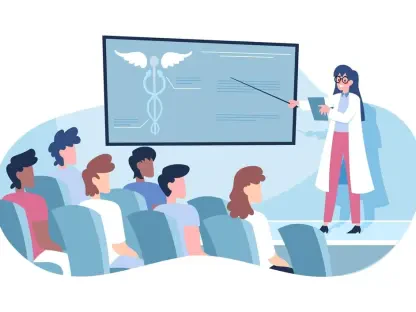Imagine a healthcare ecosystem where doctors can instantly access patient records regardless of the originating hospital or clinic, streamlining treatment and preventing repetitive procedures like unnecessary tests or imaging. This vision is at the heart of healthcare interoperability—an essential framework enabling diverse systems to share, store securely, and make patient data accessible to various stakeholders such as providers, patients, payers, and public health administrators.
Enabling Seamless Data Exchange
Healthcare interoperability is the ability of different information systems, devices, and applications to access, exchange, and use data in a coordinated way across organizational, regional, and national boundaries. The aim is to ensure timely and seamless data portability to optimize the health of individuals and populations globally. This ensures that whether a patient visits a primary care clinic, a specialist, or an emergency room, their medical history follows them, facilitating more informed decisions and timely interventions.
Over the years, the focus of interoperability projects has expanded from single healthcare enterprises to encompass the entire healthcare ecosystem, including not just providers and patients, but also payers, regulators, and researchers. Previously, efforts were centered on streamlining internal system processes like linking electronic orders to billing systems. Nowadays, the scope includes facilitating data exchange across various platforms and entities, thereby significantly enhancing the overall healthcare experience.
Optimized Patient Care Through Data Exchange
Interoperable healthcare systems can exchange various types of patient data, including treatment plans, prescriptions, lab results, demographic information, and immunization records. Improved interoperability aims to go beyond clinical data, incorporating detailed demographic and lifestyle information to tackle healthcare disparities and personalize interventions. This holistic data approach can help identify at-risk patients more effectively and offer targeted preventive measures.
The comprehensive exchange of patient information directly translates to improved patient care. With full access to medical histories, clinicians can make more accurate diagnoses, create better-informed treatment plans, and reduce the likelihood of adverse drug interactions. Immediate access to critical patient data is particularly invaluable in emergency situations where every second counts. This ensures that healthcare providers can deliver the best possible care under all circumstances.
Addressing Care Coordination and Efficiency
Interoperability also fosters improved care coordination, facilitating the smooth transfer of patient information across different care settings, from primary care to specialist consultations. It enhances workflow efficiency by reducing administrative burdens such as manual data entry and redundant testing. Healthcare providers spend less time searching for information and more time delivering care.
Moreover, well-coordinated care can prevent miscommunications that lead to errors and duplicative tests, ultimately optimizing resource utilization. Patients benefit from a more streamlined, coherent care journey that minimizes delays and overlaps, leading to better health outcomes and satisfaction. The use of artificial intelligence to analyze and update patient information automatically can further alleviate physician workload.
Empowering Patients and Reducing Costs
Patient empowerment is another crucial benefit of interoperability. Seamless access to their health data allows patients to make informed decisions regarding their care. This transparency promotes trust and active participation in their health management. Additionally, better-integrated services can significantly reduce healthcare costs. Enhanced patient care leads to fewer unnecessary treatments and hospital stays, and automation of administrative processes lowers operational expenses.
Support for public health and research is another area where interoperability shines. Aggregated data from interconnected systems allow for the identification of health trends and support for clinical trials, ultimately advancing medical research and public health initiatives. This shared data resource is vital for understanding population health patterns and responding effectively to public health emergencies.
Overcoming Interoperability Challenges
Despite its benefits, achieving seamless healthcare interoperability is fraught with challenges. The lack of standardization remains a significant barrier. The adoption of common standards like HL7 FHIR is essential to ensure data consistency and compatibility. Data security and privacy concerns, especially under regulations such as HIPAA, require stringent procedures to protect sensitive information.
Existing fragmented systems and data silos within and across organizations impede data sharing. Financial and technical resource constraints pose additional hurdles, particularly for smaller health organizations. The technical complexity of integrating multiple incompatible EHR systems further complicates efforts toward interoperability. Besides, one-way data transfer limits the effectiveness of the system, requiring more sophisticated solutions for bidirectional data flows.
Robust governance and policies are imperative to address these challenges. A consistent regulatory framework can manage issues like information blocking and ensure reliable data sharing practices. Ensuring the accuracy and completeness of shared data is crucial for effective decision-making, which necessitates comprehensive policies on data quality control.
The Path Forward
Imagine a healthcare landscape where doctors have immediate access to patient records no matter where the data originates—be it from a different hospital, clinic, or care facility. This would revolutionize patient care by streamlining treatments and eliminating redundant procedures such as repeated tests or medical imaging. At the core of this vision is healthcare interoperability, an essential framework that allows various health IT systems to communicate, share, and securely store patient data. With interoperability, patient information becomes accessible to a wide range of stakeholders, including healthcare providers, patients themselves, insurance payers, and public health officials. This interconnected system ensures that everyone involved in a patient’s care has the most complete and up-to-date information, which significantly enhances the efficiency and effectiveness of healthcare delivery. By breaking down data silos, healthcare interoperability aims to improve outcomes and create a more cohesive and responsive healthcare ecosystem, benefiting all parties involved.









